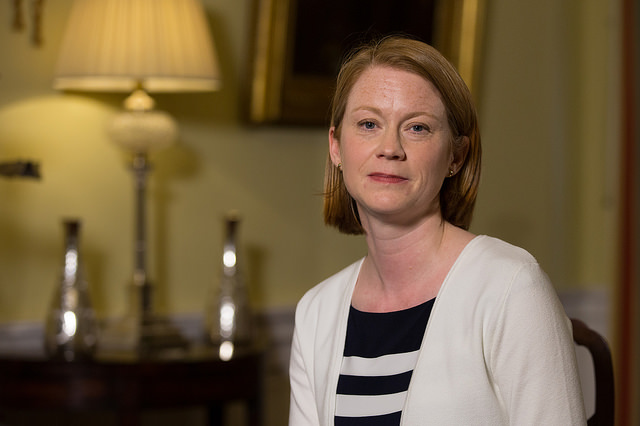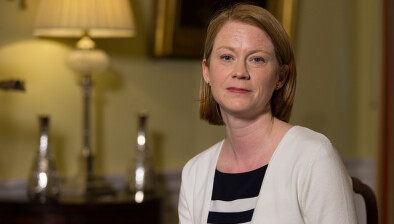Statistics reveal 7% increase in demand for Scottish Welfare Fund

Social justice secretary Shirley-Anne Somerville
The Scottish Government and local authorities spent £56 million last year to provide lifeline support and to help mitigate UK Government welfare policies, according to official figures.
The annual update of Scottish Welfare Fund Statistics for 2022-23 includes annual statistics on Community Care Grants and Crisis grants from 2013, as well as quarterly breakdowns from 2018.
From when the Scottish Welfare Fund scheme began on 1 April 2013 until 31 March 2022, 510,375 individual households have received awards totalling £395m. A third of households receiving an award were families with children, while half were single person households with no children.
In 2022-23, local authorities received 92,810 applications for Community Care Grants (3% more than 2021-22) and made 48,800 awards (similar to 2021-22) – an acceptance rate of 53% (two percentage points lower than 2021-22). Expenditure on Community Care Grant awards totalled £34.9m, which is 4% more than 2021-22. The average award was £715.
At the same time, local authorities received 288,880 applications for Crisis Grants (8% more than 2021-22) and made 186,330 awards (6% more than 2021-22); an acceptance rate of 65% (one percentage point lower than 2021-22). Expenditure on Crisis Grant awards totalled £21.1m, 4% more than 2021-22. The average award was £113.
In 2022-23, 29% of Community Care Grant applications were repeat applications, one percentage point lower than 2021-22, and 69% of Crisis Grant applications were repeats, also one percentage point lower than 2021-22.
In 2022-23, 86% of Community Care Grant applications and 91% of Crisis Grant applications were processed within the target time limits.
Local authorities were allocated £35.5m for Scottish Welfare Fund awards in 2022-23. There was also an estimated underspend of £4.5m carried forward from 2021-22. Of the estimated total £40m available for awards this year, £56m (140%) was spent by 31 March 2023. This overspend is 26 percentage points higher than the one seen in 2021-22 (114%).
Since April 2013, there have been 31,910 Tier 1 reviews for Community Care Grants, and 44,615 for Crisis Grants. Fewer than half of decisions have been revised at this stage for both Community Care Grants (47%) and Crisis Grants (42%).
Reflecting pressures facing households, a total of 381,695 applications to the Scottish Welfare Fund were received in 2022-23, a 7% increase compared to 2021-22. The majority were for Crisis Grants (288,880), and the others were for Community Care Grants (92,810).
Compared to 2021-22, the number of Community Care Grant applications increased by 3% (2,985), continuing an upward trend since 2017/18. At local authority level, this varied from a 11% decrease in Inverclyde to a 21% increase in South Ayrshire.
The number of Crisis Grant applications increased by 8% (20,535), reversing the slight decrease seen in 2021-22. At local authority level, this varied from a 13% decrease in West Dunbartonshire to a 45% increase in East Lothian.
Applications to the Scottish Welfare Fund have shown numerous peaks in recent years, some associated with peaks in Covid infections, but also correlating with a commonly-seen increase around January. January 2023 was the first month with more than 40,000 SWF applications.
Social justice secretary Shirley-Anne Somerville said: “UK Government policies are hurting families, and forcing us to spend to mitigate the inadequacy of their welfare provision.
“We will continue to press for the full economic and fiscal powers we need to tackle inequalities.”








